Hyundai Getz 2009 News

Hyundai aims to ditch 'bargain' tag
Read the article
By Mark Hinchliffe · 11 Aug 2011
Hyundai Australia CEO Edward Lee says the company's plan is no longer centred on entry-level pricing, but values such as safety, driving experience and ride quality.
With the exit of the Getz and the introduction of the Accent, the company now has a full five-star safety rating on all of its passenger vehicle fleet.
"We're not concerned with leaving the bottom of the market," Lee says.
“I think we changed people's perception of the brand a lot already.Five-star safety is our new strategy.”
"Australian people think safety is one of the most important things along with driving and ride."
Sales and marketing manager Oliver Mann says the Getz name has gone the way of the Excel and doesn't expect to see either model name returned to the brand.
Australians bought 153,000 Getz in their model lifetime and only about 400 are left after production ended last year. That's less than half the 1000 they sell each month. The Getz 1.4-litre three-door is listed at $13,990.
It's a big hole for Hyundai to fill, but Mann is not concerned.
"Even though it was our entry level car, we mainly sold the 1.6-litre five-door model, anyway," Mann says.
"We're not planning to fill the entry level price again.”
"We're getting out of the bottom end of the market. Getz won't be replaced directly."
However, with the introduction of the 1.6-litre, slightly larger Accent, the 1.6-litre i20 models have been deleted and the $15,490 1.4-litre three-door is being sold at $14,990 driveaway.
Hyundai also does not have room in its five-star strategy for the four-star i10 as a replacement bargain car.
"We looked long and hard at the i10 business case, but it wasn't profitable and didn't fit in with our five-star safety rating strategy," Mann says.
Product planning senior manager Roland Rivero says supply of the Indian-made i10 also could not be guaranteed with the factory able to build 450,000 a year and the domestic market taking 400,000.
"That would leave Europe and ask to argue over the remainder," he says.
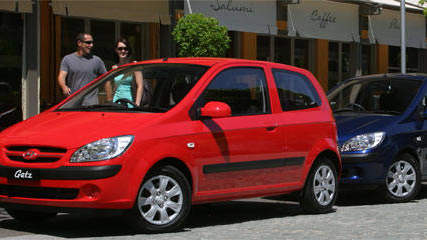
Options plummet in value
Read the article
By Paul Gover · 27 Nov 2009
A lot of optional equipment depreciates far faster than the car it is fitted to, and rapid changes in standard equipment can overtake impressive showroom choices in as little as three years. Extra safety equipment is hit among the hardest by depreciation, as used-car buyers are reluctant to pay extra for additional airbags or ESP stability control.Yet a sunroof or leather trim or flashy alloy wheels could get a payback at trade-in or resale time as upmarket additions can add extra appeal. Even the right colour choice can make a difference to a car's secondhand value, as trendy colours become unpopular quickly while staples such as white, silver and black tend to be timeless."You have to be very careful. If you start by spending $3000 on options it might all be worthless in a few years," the spokesman for car-price authority, Glass's Information services, says. "If the car depreciates at 40 per cent, some of these options can depreciate at twice that, or more," says Chris D'Sousa.He says flashy extra gear, including sunroofs and leather trim, might not put extra cash in the wallet but could make it easier to get a sale. "They don't really add resale value. They add resale appeal," D'Sousa says.Glass's tracks values for more than 40 items of optional equipment, currently tracking it backwards to cars sold in 2000. The list includes everything from extra airbags to CD players, body kits, bullbars and Xenon headlamps. A range of extras is rated with zero value after 10 years, including anti-skid brakes, cruise control (which hits zero at seven years), and a six-stack CD player.Glass's believes the best approach to new-car shopping is to choose a car that is already well equipped, only adding optional essentials such as a towbar. "If you take a basic car, it's better to take a higher-spec model because options deprectiate a lot more than the car itself. Some, like towbars, will be value for about four years," he says. "A good option will add value for up to 10 years. Then it becomes irrelevant."It is better to buy the higher-spec car because resale will be better." Digging into specifics, D'Sousa says buyers need to be careful what they add to a car. "There are certain options, like the visual touch-and-feel stuff _ that's sunroofs, alloy wheels and leather trim - that will always enhance a car. Then there are hidden options that are more in tune with today's market needs, like ESP and curtain airbags, that have no perceived value."Turn the clock forward, and this stuff is standard. It adds no value. "We believe side airbags will have some value now for about six years. Then it will be an expectation. Satnav might have an average new price of $5000, but after a year we believe the value falls to only $2000. Then at 10 years it falls to $300. A body kit will depreciate less than a rear cargo barrier."Glass's tracks the whole car market and D'Sousa says there are different rules in different price classes. A $15,000 Hyundai Getz should not be tweaked, a Commodore or Falcon only deserves dressing if it is already a premium model, while BMW and Benz buyers should avoid going overboard."If you take a Hyundai Getz and spend a lot of money dressing up, people buying it secondhand don't perceive it as premium," he says. "If you were looking at a base-model Falcon or Commodore I would suggest no options beyond a towbar. But if you look at a G-Series Falcon then a sunroof and leather trim will add some value."Even with a BMW, there are some options that add a lot more, and luxury brands have options' lists that run to small books. You can take a car and add 50 per cent to the purchase price, but does that add value?"On car colours, D'Sousa warns about going for fashion colours that change rapidly. Holden is famous for using 'hero' colours on its V8- powered SS Commodore, switching rapidly from gold to light blue, green and even purple in recent years. "These days everyone wants a black or silver car. A few years ago everyone wanted a green car, but these days no-one wants a green car," he says.There are also regional differences between what sells and what sits on the lot. "Convertibles don't sell well in Queensland, but they are popular in Sydney or Melbourne. White cars are not so popular in Melbourne," D'Sousa says."A fuddy-duddy car like a Mercedes-Benz sells well in Melbourne. People in Darwin will travel to Adelaide to get a secondhand four- wheel drive because they know it has had an easier life. It's the same for people in Perth, who will go to Adelaide for an SUV because they don't like the red-dust staining you get in WA."Item new price value after 10 yearsSatellite navigation $5000 $300In-car television $2800 $200Electric sunroof $2300 $200Dual airbag package $1400 $0Alloy wheels $1000 $0Source: Glass's Information Systems
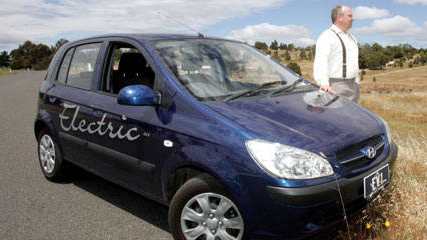
Hyundai Getz Electron
Read the article
By Neil McDonald · 26 Nov 2009
The locally built Electron - an electric version of the Getz - is the first vehicle to pass Victoria's tough new crash rules for electric cars.The test was performed by national crash testing authority, Autoliv Australia. The Electron is built by central Victorian electric car company, Blade Electric Vehicles. The car is minus the Getz's petrol engine, replaced with an electric motor that gives it a range of 200km.BEV founder, Ross Blade, says the crash test results were encouraging and will help spearhead a concerted export push for the car. Exports have started to New Zealand and Blade has South-East Asia in his sights. "We were all on tenderhooks with the crash test because so much is riding on it," Blade says.The Victorian Government contributed half the cost of the testing for the $48,000 car. "This is Australia's first electric vehicle to be successfully crash tested and, according to Autoliv's engineers, the Electron's results were excellent," he says.The hatch passed all crash testing criteria by significant margins. It was conducted to Australian Design Rule standards at 56km/h, 8km/h less than the Australian New Car Asssessment Program. Blade will follow up with a full ANCAP test next year.One of BEV's earliest customers, Alan Gray, has just completed 20,000km in his Electron - unserviced - and without the car being off the road for a single day in the past 18 months. "The car is amazing. I have to fight my wife Judith for a drive," Gray says. "She loves it more than I do and it never lets us down."Gray says the Electron is charged from the solar panels on the family home and is used for the family's sustainable living business. "We do about 60km a day in it," he says."The most we've travelled is 90km. I estimate that it will pay for itself in four years - even without petrol prices rising," Gray says.His own figures show the Electron has cost just 97c for every 100km, versus a petrol Getz's $12 for every 100km. More than 20 Electrons have been sold with seven going to local Victorian councils. The Mk III version is now capable of being fully recharged in just an hour.Blade says he would like State and the Federal governments to back their green credentials by buying the car. "We don't want money, we want orders," he says. BEV has recently hired a former chief scientist for GM-Holden, Dr Larry Jordan."Dr Jordan joins the staff of BEV at an exciting time," Blade says. "Now that we've had a successful - and very expensive - crash test, we are licensed as a second stage manufacturer for volume production."Jordan's specialist experience will be vital "as we further develop the Electron and sell it into new markets", Blade says.
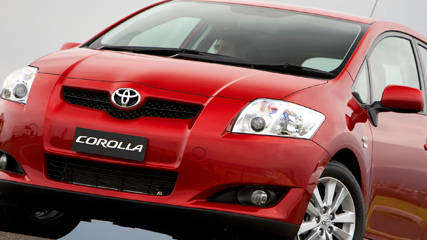
Corolla tops Commodore - again
Read the article
By Neil McDonald · 05 Aug 2009
The Toyota four cylinder eclipsed the Holden Commodore by just 35 cars last month to become the biggest seller. It is the fourth time in 18 months it has turned the tables on Holden's locally built big six. The Japanese carmaker sold 3856 Corollas versus 3891 Commodores last month.The Corolla led a modest small car sales spike last month as buyers continue to chase economy purchases over large sedans. Apart from small cars, the latest VFACTS industry sales figures for July reveal that sportscars and off-roaders also recorded positive sales gains.Small car sales were up 2.7 per cent in July compared to the same month last year. Sportscars increased 10.3 per cent while medium and luxury off-roaders were up 2.4 per cent and 7.2 per cent.The FCAI's sales figures show that 75,333 vehicles were sold last month, 8643 fewer than the same month last year. Year-to-date 530,556 new vehicles have been sold, down 15 per cent or 96,115 vehicles, compared to the same period last year.Toyota continues to dominate as sales leader. It has sold 110,897 vehicles so far this year to secure a dominate overall market share of 24 per cent. Toyota's lead is almost double that of its nearest rival, Holden with 66,418 sales with Ford in third spot with 54,239 sales.The Federal Chamber of Automotive Industries chief executive, Andrew McKellar, said the Federal Goverment's business tax stimulus continued to have a positive knock-on effect on sales.Despite overall sales being down 10 per cent last month compared to the same month last year, business sales remained strong, he said. There was evidence of a flow-on from the very strong June sales result with strong demand for work vehicles, he said. "Particularly from buyers accessing the business tax break on new investments," he said.Some dealers are also reporting waiting lists of several months on certain models because of a backlog of orders on work utes and light commercial vehicles.Top Ten sellers (July) 1 Toyota Corolla 38912 Holden Commodore 38563 Ford Falcon 28344. Mazda3 27855 Toyota HiLux 25636 Hyundai Getz 21477 Mitsubishi Lancer 21298 Hyundai i30 20459 Holden Cruze 198210 Toyota Camry 1717Top Ten brands (July) 1 Toyota 16,6642 Holden 10,2663 Ford 77834 Hyundai 62265 Mazda 60246 Mitsubishi 41667 Nissan 37568 Subaru 28079 Honda 265710 Volkswagen 2361
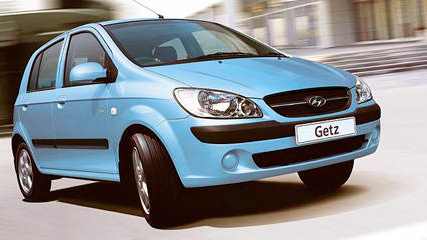
Cheapest cars to run
Read the article
By Neil McDonald · 02 Jul 2009
Lower petrol prices have helped soften the hip-pocket hurt for Australian motorists.
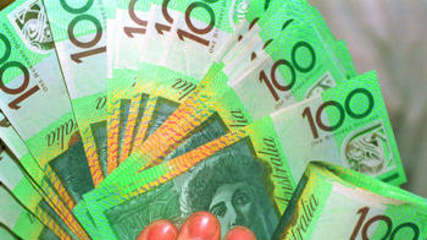
Recession motoring on a budget
Read the article
By CarsGuide team · 04 Jun 2009
Even an economical compact like the Hyundai Getz pokes a $100 hole in the weekly budget.
W.jpg)
Hybrid sales dropping
Read the article
By Neil McDonald · 03 Jun 2009
Despite new entrants coming into the market, the preference for hybrid vehicles has fallen 74 per cent among private buyers this year, according to the latest VFACTS industry figures on fuel and buyer

Car prices will tell whole truth
Read the article
By Paul Gover · 15 May 2009
Advertised prices are set to jump by an average of $8000 by the end of the month, as car companies are forced to commit to a minimum all-in national price for the first time.The driveaway deals on bargain cars such as the Hyundai Getz will not change, but the advertised prices of the value-driven contenders around the $19,990 price point will jump by around $4000 and it will be more for popular family cars including the Holden Commodore and Ford Falcon. Luxury cars, which are rarely advertised with a price, could still appear more than $25,000 more expensive.The reason for the apparent increases is that all advertised prices from May 25 will have to include on-road costs - delivery, dealer preparation, stamp duty, registration and compulsory insurance - under new regulations which will be enforced by the Australian Competition and Consumer Commission. Cars are not the only commodity affected by the change, which is also expected to have a significant impact in the travel sector.Used cars are not affected and neither are established houses.But car companies are struggling to adjust and some believe the 'clarity pricing' will affect their ability to deal, since it is sets a minimum price level."It could be seen as price fixing. If the car companies decided to make one price apply across the board, the ACCC could come to us and accuse us of price fixing," the spokesman for Mercedes-Benz Australia, David McCarthy, said yesterday."It limits the flexibility in the sale by the dealer, creates a situation where car prices will vary - sometimes by thousands of dollars - between states and will further disadvantage dealers in some areas, and it makes it very difficult for the dealer to adjust pricing to make a sale."Most brands are avoiding conflict on the price position while getting their lawyers to investigate the requirements under the ACCC's enforcement policy.But the peak body for the motor industry, the Federal Chamber of Automotive Industries, is concerned the ACCC may have "picked up the ball and run out of the stadium"."One of the consequences might be, not only to make the price transparent, but invisible," says the chief executive of the FCAI, Andrew McKellar.The FCAI is also worried consumers might lose out."Does the price mean you cannot negotiate below that? They have left us with some quite difficult loose ends. There has now got to be a bit of fancy footwork to resolve the issues, as best we can, in the final run-in or as quickly as possible after that."
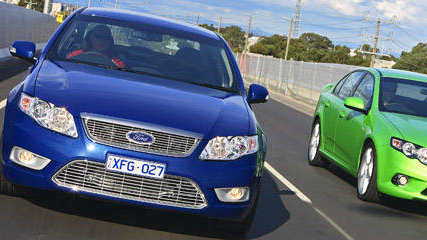
Ford steps up ad campaign
Read the article
By CarsGuide team · 22 Apr 2009
Ford has suffered a signficant sales setback over the past 18 months but the company's new chief, Marin Burela, says it has all the ammunition it needs to hit the target in Australia.He believes everything from the baby Fiesta to the homegrown Falcon has been undersold and is pushing a new line to revitalise the showroom action.An upbeat Burela was launching the $20 million Advanced Centre for Automotive Research and Training's environmental wind tunnel, noting the investment highlights the technology and innovation Ford is using to appeal to efficiency conscious consumers."This was once a myth and a dream," he says of the XT Falcon's 9.9-litres for 100km fuel consumption."There are some mainstream large volume four-cylinders that achieve that economy ... you can actually have a large car and be socially responsible."We've also been locked out of certain markets because we didn't have a large car with sub-240g/km emissions."Governments wouldn't even put us on their shopping lists."This Falcon now achieves emissions of 238g/km."I'll be knocking on the door of those governments (departments) and fleets.""For those who choose not to drive a large car, then the Fiesta actually provides better fuel economy than the (Toyota) Prius and at $15,000 less."Behind the positive spin is a simple fact — Ford's marketing hasn't matched its product.The Falcon was awarded Car of the Year by Carsguide and Wheels last year — and was last month outsold by the Commodore by 1554 cars.Ford is touting Paul Gover's assessment of the Fiesta as "the best car in class — simple as that" on a 12m billboard next to Melbourne’s Bolte Bridge — yet the best car in the segment is being outsold by the Toyota Yaris and Hyundai Getz."All we have to do is get Australian customers to accept the world is at their door," Burela says."We'll be advertising in a very focused, very specific way.""We need to get people to drive the cars and judge for themselves."




